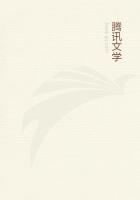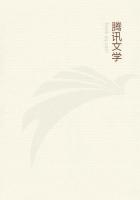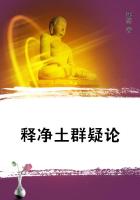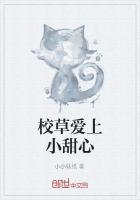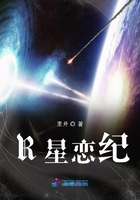THIS WILL KILL THAT.
Our lady readers will pardon us if we pause for a moment to seek what could have been the thought concealed beneath those enigmatic words of the archdeacon: "This will kill that. The book will kill the edifice."To our mind, this thought had two faces. In the first place, it was a priestly thought. It was the affright of the priest in the presence of a new agent, the printing press. It was the terror and dazzled amazement of the men of the sanctuary, in the presence of the luminous press of Gutenberg. It was the pulpit and the manuscript taking the alarm at the printed word: something similar to the stupor of a sparrow which should behold the angel Legion unfold his six million wings.
It was the cry of the prophet who already hears emancipated humanity roaring and swarming; who beholds in the future, intelligence sapping faith, opinion dethroning belief, the world shaking off Rome. It was the prognostication of the philosopher who sees human thought, volatilized by the press, evaporating from the theocratic recipient. It was the terror of the soldier who examines the brazen battering ram, and says:--"The tower will crumble." It signified that one power was about to succeed another power. It meant, "The press will kill the church."But underlying this thought, the first and most ****** one, no doubt, there was in our opinion another, newer one, a corollary of the first, less easy to perceive and more easy to contest, a view as philosophical and belonging no longer to the priest alone but to the savant and the artist. It was a presentiment that human thought, in changing its form, was about to change its mode of expression; that the dominant idea of each generation would no longer be written with the same matter, and in the same manner; that the book of stone, so solid and so durable, was about to make way for the book of paper, more solid and still more durable. In this connection the archdeacon's vague formula had a second sense.
It meant, "Printing will kill architecture."
In fact, from the origin of things down to the fifteenth century of the Christian era, inclusive, architecture is the great book of humanity, the principal expression of man in his different stages of development, either as a force or as an intelligence.
When the memory of the first races felt itself overloaded, when the mass of reminiscences of the human race became so heavy and so confused that speech naked and flying, ran the risk of losing them on the way, men transcribed them on the soil in a manner which was at once the most visible, most durable, and most natural. They sealed each tradition beneath a monument.
The first monuments were ****** masses of rock, "which the iron had not touched," as Moses says. Architecture began like all writing. It was first an alphabet. Men planted a stone upright, it was a letter, and each letter was a hieroglyph, and upon each hieroglyph rested a group of ideas, like the capital on the column. This is what the earliest races did everywhere, at the same moment, on the surface of the entire world. We find the "standing stones" of the Celts in Asian Siberia; in the pampas of America.
Later on, they made words; they placed stone upon stone, they coupled those syllables of granite, and attempted some combinations. The Celtic dolmen and cromlech, the Etruscan tumulus, the Hebrew galgal, are words. Some, especially the tumulus, are proper names. Sometimes even, when men had a great deal of stone, and a vast plain, they wrote a phrase.
The immense pile of Karnac is a complete sentence.
At last they made books. Traditions had brought forth symbols, beneath which they disappeared like the trunk of a tree beneath its foliage; all these symbols in which humanity placed faith continued to grow, to multiply, to intersect, to become more and more complicated; the first monuments no longer sufficed to contain them, they were overflowing in every part; these monuments hardly expressed now the primitive tradition, ****** like themselves, naked and prone upon the earth. The symbol felt the need of expansion in the edifice.
Then architecture was developed in proportion with human thought; it became a giant with a thousand heads and a thousand arms, and fixed all this floating symbolism in an eternal, visible, palpable form. While Daedalus, who is force, measured; while Orpheus, who is intelligence, sang;--the pillar, which is a letter; the arcade, which is a syllable; the pyramid, which is a word,--all set in movement at once by a law of geometry and by a law of poetry, grouped themselves, combined, amalgamated, descended, ascended, placed themselves side by side on the soil, ranged themselves in stories in the sky, until they had written under the dictation of the general idea of an epoch, those marvellous books which were also marvellous edifices: the Pagoda of Eklinga, the Rhamseion of Egypt, the Temple of Solomon.
The generating idea, the word, was not only at the foundation of all these edifices, but also in the form. The temple of Solomon, for example, was not alone the binding of the holy book; it was the holy book itself. On each one of its concentric walls, the priests could read the word translated and manifested to the eye, and thus they followed its transformations from sanctuary to sanctuary, until they seized it in its last tabernacle, under its most concrete form, which still belonged to architecture: the arch. Thus the word was enclosed in an edifice, but its image was upon its envelope, like the human form on the coffin of a mummy.
And not only the form of edifices, but the sites selected for them, revealed the thought which they represented, according as the symbol to be expressed was graceful or grave.
Greece crowned her mountains with a temple harmonious to the eye; India disembowelled hers, to chisel therein those monstrous subterranean pagodas, borne up by gigantic rows of granite elephants.

